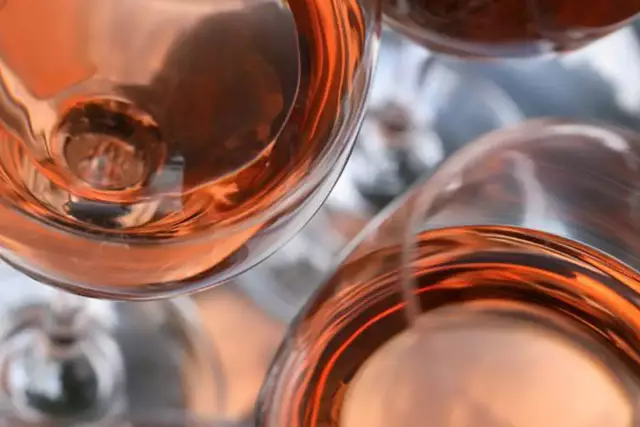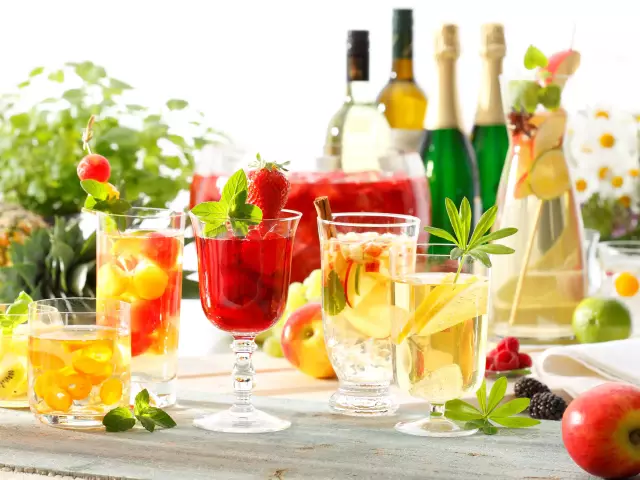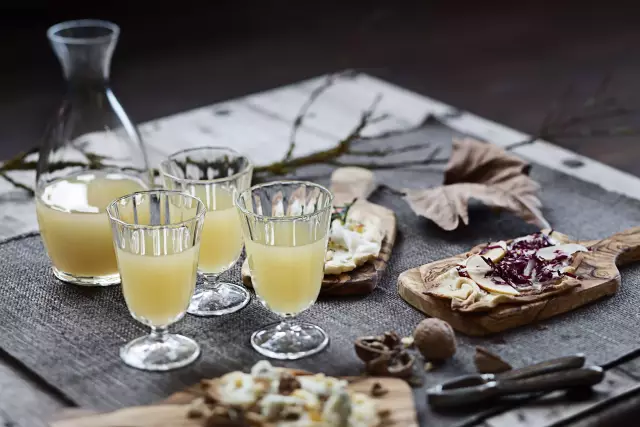Blanc de Noir
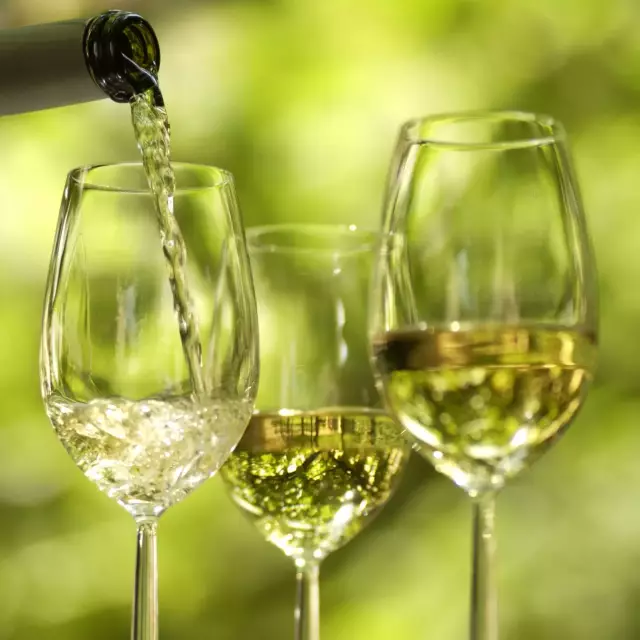
"White from black" - this is the literal translation of "Blanc de Noir" and stands for a white wine made from dark blue to black grapes.
Facts
-
100 %
red grapes
-
2021
was "Blanc de Noir" redefined in terms of wine law
As the name suggests, this form of winemaking has its origins in France, where the red grapes of Pinot Noir (Spätburgunder) and Pinot Meunier (Schwarzriesling) have always been processed into white wines as the basis for champagne.
This is possible because red berries generally have light flesh. The red pigment, the so-called anthocyanins, are mainly present in the berry skins. If the juice from red grapes is to remain white, no colourants from the skins may pass into the must. It is therefore important that the red grapes, which are as healthy as possible, are only pressed gently. The light colored must obtained is then fermented to a white wine. A typical Blanc de Noir has a light color and can sometimes have hints of yellow-gold.
If the cellar master leaves the squeezed red berries in the pressed juice for a little longer - the experts then speak of a longer "maceration time" – this is when a little more color passes from the skins into the must and a rosé develops.
In terms of wine law
After the 10th law amending the Wine Act came into force in January 2021, according to the new Wine Ordinance the designation "Blanc de Noir" or "Blanc de Noirs" may only be used for domestic wine, sparkling wine, quality sparkling wine or semi-sparkling wine if it is a product with a protected designation of origin (PDO) is made from fresh red wine grapes like a white wine and has the typical color of white wine.
Why Blanc de Noir?
The white wines obtained from the red grapes are characterized by their distinctive fruit aromas, pleasant freshness and moderate acidity. They combine the full flavor of a red wine with the fruitiness of a white wine and thus display the characteristics of both types. Blanc de Noirs are excellent food companions that go well with a wide range of dishes.
Flexibility and positive side effects
For winemakers who mainly cultivate red grape varieties, the production of Blanc de Noirs is also an opportunity to react flexibly to the increasing demand for white wine. On the other hand, there is a positive side effect for the production of red wine: if the light-colored must for a Blanc de Noir is removed before the maceration, the ratio of the color and tannin-containing skins to the remaining pressed juice in the mash changes. As a result, winemakers and wine lovers can enjoy more complex and color-intensive red wines.
How is Blanc de Noir defined under wine law in Germany?
According to the Wine Law, the name "Blanc de Noir" or "Blanc de Noirs" may only be used if it is a product with a protected designation of origin (PDO), pressed from fresh red grapes like a white wine and with the color typical of white wine.
Varietals

with shrimps Pumpkin soup
with shrimps
- 1 kleiner Hokkaido-Kürbis
- 1 Zwiebel
- 5 cm Ingwer
- 2 EL Butter
- 750 ml Gemüsebrühe
- 300 ml Kokosmilch
- 12 mittelgroße Shrimps
- 2 EL Olivenöl
- Eine Prise Salz & Pfeffer
Peel and dice the pumpkin, onion and ginger and sauté in the butter.
Deglaze with the vegetable stock and sauté for about 15 to 20 minutes until soft.
Sauté the shrimps in a little olive oil and leave to cook over a low heat for a few minutes. Place on wooden skewers and keep warm in aluminium foil.
When the vegetables have been steamed until soft, blend finely with a hand blender. Stir in the coconut milk and season with salt and pepper to taste.
Serve the soup in large cups and garnish with the shrimp skewers.
Freshly baked white bread goes well with this.
- Muskateller (halbtrocken & feinherb)
- Federweißer (brut nature)
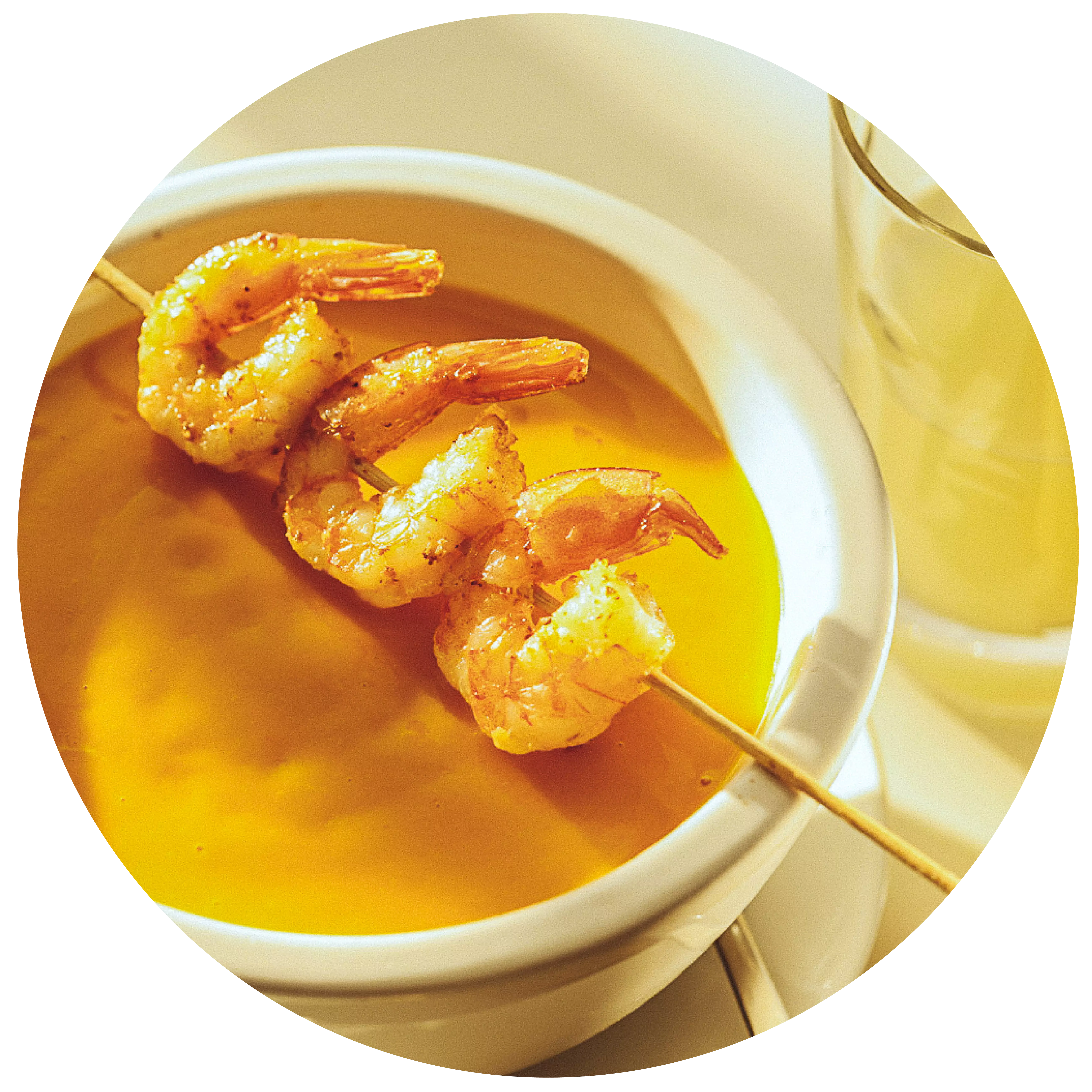
with cinnamon and sugar Odenwald apple soufflé
with cinnamon and sugar
- 1 kg Äpfel
- 250 Gramm Semmelbrösel
- 125 Gramm Zucker
- 2 EL Butter
- 1/2 TL Zimt
- 1 Msp. gemahlene Nelken
- 50 Gramm Rosinen
- 100 ml trockener Weißwein
- 1 EL Rum
- zum Bestreuen Zimt & Zucker
Sauté the breadcrumbs, butter, spices and 2 tbsp sugar in a pan. Peel the apples and cut into slices. Sauté in white wine with rum and sugar until the liquid has almost evaporated.
<p
<p>Fill the greased springform tin alternately with the breadcrumb mixture and apples (bottom and top layer of breadcrumb mixture).
Bake for one ½ hour at 140 °C. Sprinkle with cinnamon and sugar.
- Riesling (lieblich)
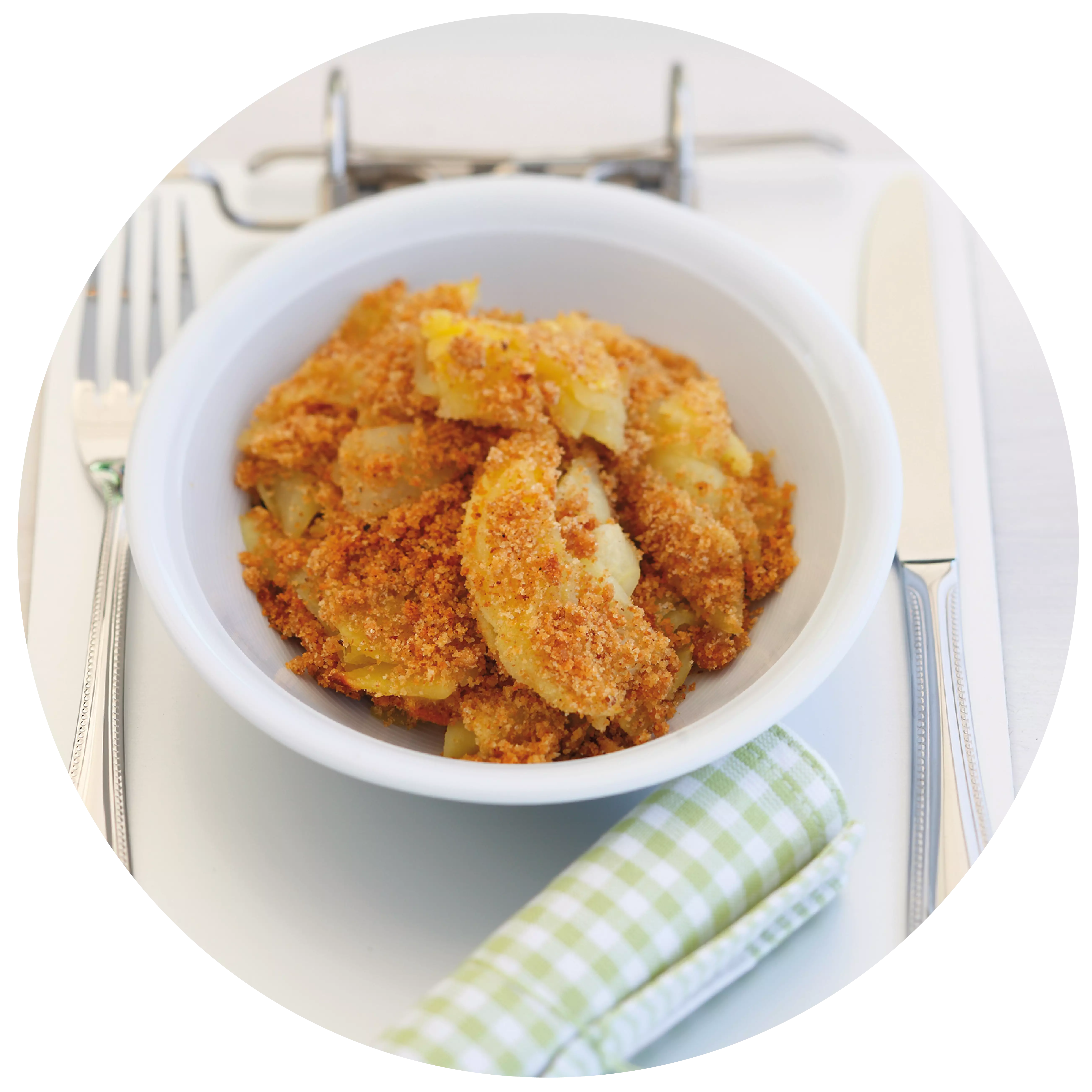
with fresh chanterelles Autumn bruschetta
with fresh chanterelles
- 4 Ciabatta-Brötchen
- 200 Gramm kleine Pfifferlinge
- 4 EL kleingehackte Petersilie
- 4 Zehen Knoblauch
- 80 Gramm Pecorino (Hartkäse)
- 8 EL kaltgepresstes Olivenöl
- Eine Prise Salz & Pfeffer
Preheat the oven to 200 degrees.
Clean the chanterelles. Sauté the parsley in a pan with half of the oil, then add the mushrooms and cook over a low heat for approx. 5 minutes.
Slice the rolls and bake for approx. 5 minutes until crispy.
Chop the garlic into small pieces, spread on the warm bread rolls and drizzle with the other half of the oil. Coarsely grate the pecorino.
Stir the chanterelle and parsley mixture into the pecorino and spread over the halves of the rolls.
- Pinot Gris (trocken)
- Federweißer (brut nature)
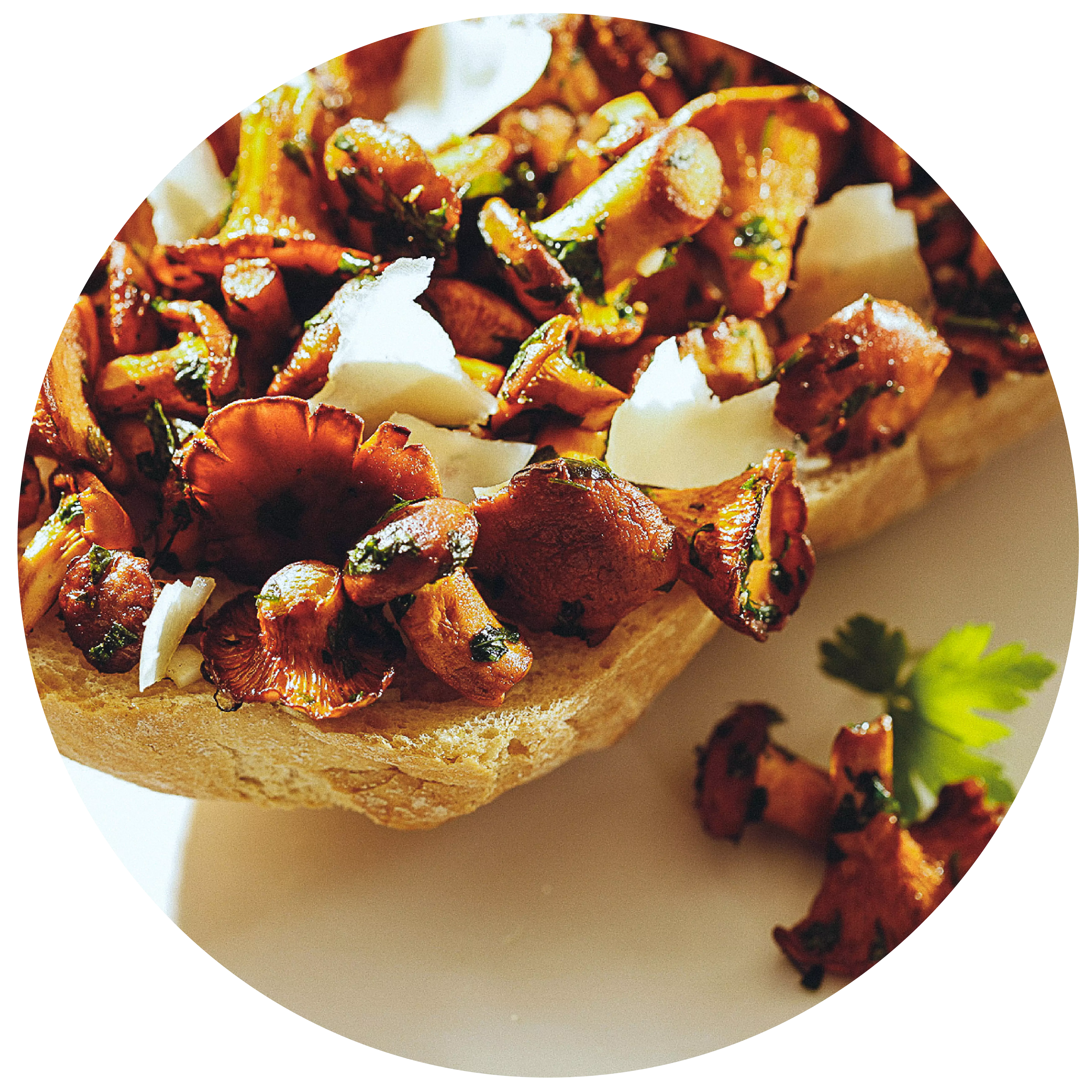
with blueberries Banana and parsley waffles
with blueberries
- 25 Gramm glatte Petersilie
- 200 ml Milch
- 2 Eier Größe L
- 70 Gramm Zucker
- 1 Päckchen Vanillezucker
- 100 ml Öl
- 75 Gramm Naturjoghurt
- nach Belieben Butterschmalz oder Pfannenfett
- 300 ml Sahne
- 1 halbe Vanilleschote
- 2,5 EL Puderzucker
- 500 Gramm Blaubeeren
- 100 ml weißer Traubensaft
- 250 Gramm Mehl
- 1 TL Backpulver
- 200 Gramm überreife Bananen
- eine Prise Meersalz
Dough:
Mix the flour, 1 pinch of salt and baking powder in a bowl and set aside.
Blend the bananas and parsley with 100 ml milk to a fine puree. Put to one side.
Separate the eggs. Mix the egg yolks with 20 g sugar, vanilla sugar, oil and banana puree until smooth. Stir in the flour mixture, milk and yoghurt with a whisk.
Beat the egg whites with 1 pinch of salt and the remaining sugar until stiff. Fold the beaten egg whites into the batter.
Topping:
Whip the cream with the seeds from the vanilla pod and 1.5 tbsp icing sugar until creamy (not too stiff!). Leave to cool.
Heat a large pan, lightly caramelise 1 tbsp of icing sugar, add the blueberries and toss briefly, deglaze with the grape juice and allow to reduce briefly.
Preheat the waffle iron and melt the clarified butter. Brush the waffle iron with a little clarified butter, ladle in the batter in batches and bake until golden brown. Serve with the topping.
- Scheurebe (süß & edelsüß)
- Silvaner (süß & edelsüß)
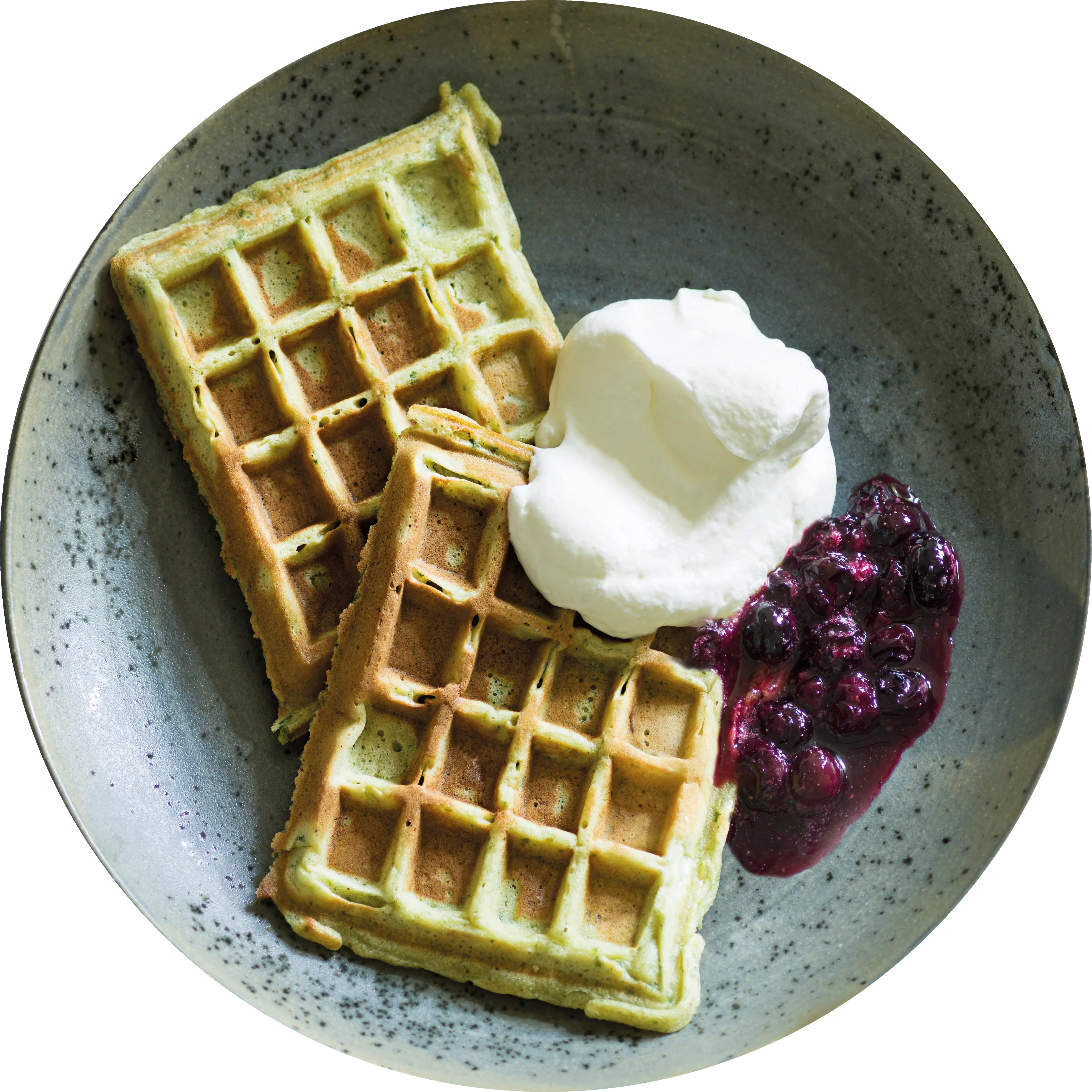
Teaser
Events
-
Show
winetasting in our winery - cheese & wine
Mainz-Hechtsheim


